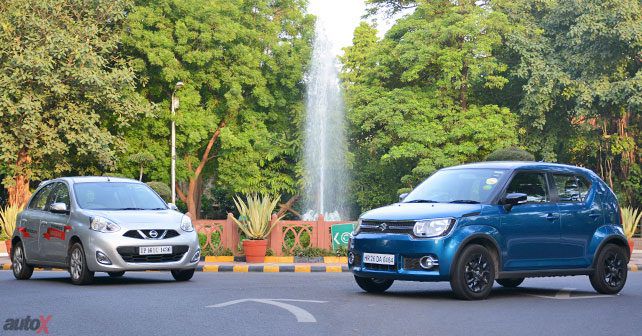

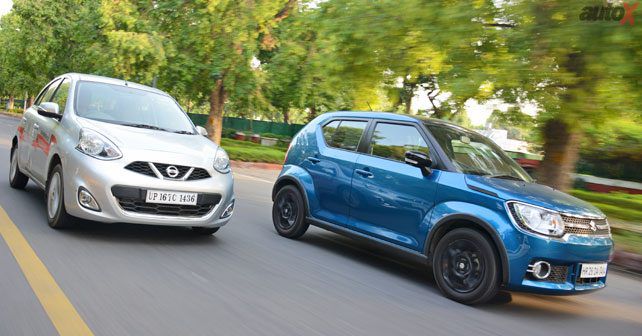

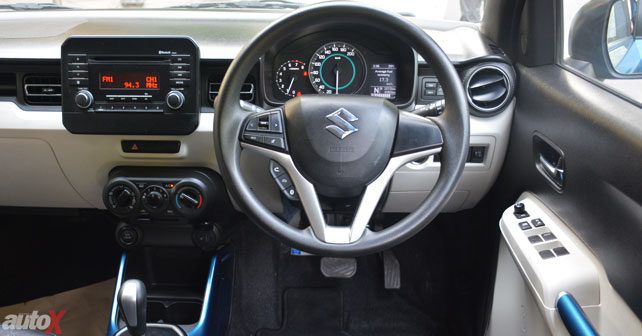
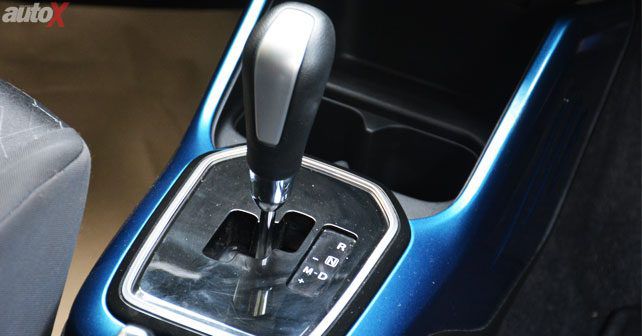
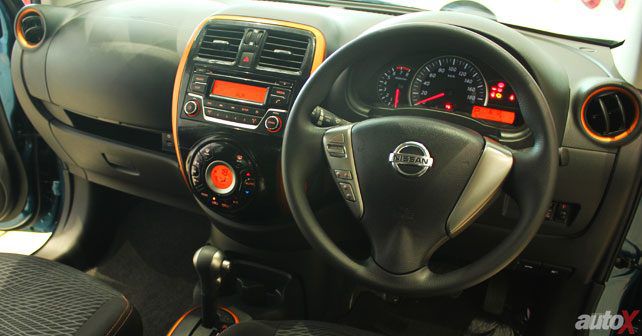
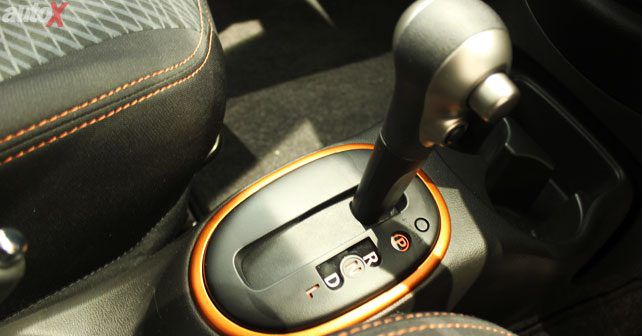
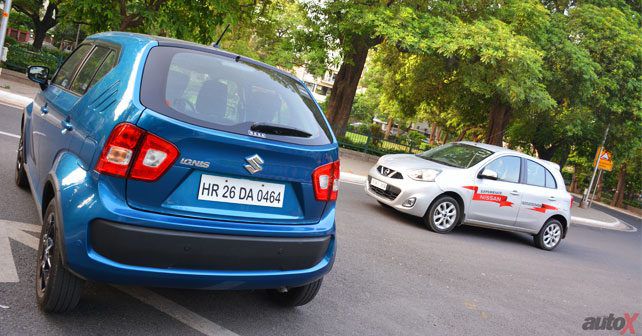
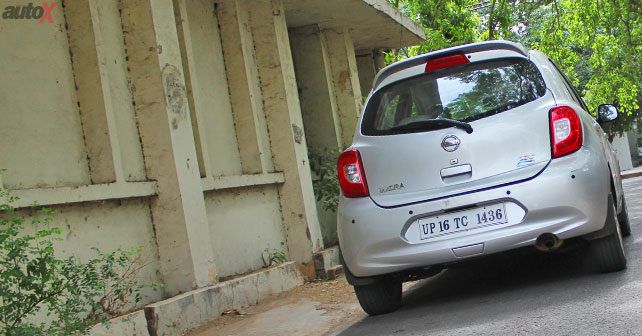
AMTs are much more affordable than CVTs. So, naturally, CVTs should be better, right? We lined up the Maruti Suzuki Ignis AMT and Nissan Micra CVT for a quick comparison. Let's see how it goes.
Affordable automatic cars are only just gaining traction in India thanks to the Automated Manual Transmission. While that’s all well and good, we believe that an AMT car is also faster than its conventional CVT automatic counterpart. There was only one way to find out…
Having dodged a cyclist coming the wrong way and a badly parked autorickshaw in one swift manoeuvre I managed to slot the Ignis into a parking space straight in between two trees. I jumped out quickly and used to the touch-to-lock keyless entry feature. But just as I had taken a stride to head into Galleria market, a voice in bated breath let out an ‘excuse me!’ in my direction. As I turned around to identify the voice I spotted an elderly gentleman waving and half walking half running towards me. As he caught up to me, he apologized politely for flagging me down and told me the reason to have caused this behaviour was the Maruti Suzuki Ignis I had just driven here in.
In a pretext of ‘buying a car for his daughter’ the gentleman was interested in the Ignis. I gave him a low down on our long term Ignis AMT. Then I had to give a rather boring explanation about the difference between AMT and traditional automatics (largely CVTs in the hatchback segment).
So here I’ am, armed with a VBOX to settle this dispute once and for all! Representing the AMT department is our trusted long-term Ignis while the CVT corner is being filled in by the recently (aesthetically) updated Micra CVT.
On paper, the Ignis has the advantage with a lower kerb weight and a more powerful 81bhp engine with an extra cylinder. The Micra on the other hand comes with a similar displacement 1.2 litre petrol engine, but its continuously variable automatic transmission ensures power is delivered seamlessly and in a smooth manner.

Now, I have been living with the Ignis for a while now and I can tell you this - so long as you lift off whenever you want a gear change, the automated manual transmission will upshift smoothly. It’s also worth noting that the transmission will only change gears above 2,000 rpm at initial speeds, a limitation of sorts when crawling between speed breakers. But otherwise it’s not too bad on its own. And when in need for power all you need to do is mash the throttle pedal and the car will downshift up to two gears quickly to give you immediate acceleration. Maruti has always had good petrol engines and this 1.2 is no different, it is rev happy at all times and sounds good too.
The powertrain of the Micra CVT on the other hand has a ‘wheezy’ (oops) nature. No doubt it is smoother to drive without having to think about gearchanges but if you mash the long pedal all of a sudden, it does have a jerky response at times. While that is not a deal breaker, what turns out to be is the lack of poke owing to the associated rubber band effect of CVTs and mechanical power losses. As a result, the engine is always noisy while driving around and you do not get immediate throttle response when you put your foot down.
Things get even worse for CVT when you do outright acceleration runs. Put your foot down in ‘Sports’ mode (yes, the Micra CVT gets one) and the wail from the powertrain overshadows actual physical movement from the car. The end result was a leisurely 0 – 100 km/h time of 16.25 seconds.
The Ignis beat the Micra’s 0 – 100 km/h time by close to 3 seconds with a time of 13.34 seconds. Reason being that the AMT unit does not restrict the engine’s performance under load. Its only under gearshifts that you lose time over a manual car.
In real world terms, the Ignis feels considerably faster than the Micra under outright acceleration. A fact represented by a 0 – 200 meter time of 12.50 seconds for the Ignis and 13.64 second time for the Micra. The Ignis in fact uses surprisingly less tarmac to reach 100 km/h from standstill than the Micra. On the whole though, the Ignis feels willing whereas the Micra feels like its lugging quite the invisible load around.
Performance sheet:
| Ignis 1.2 AMT | Micra 1.2 CVT | |
| 0 – 100 km/h | 13.34 seconds | 16.25 seconds |
| 0 – 60 km/h | 5.94 seconds | 7.19 seconds |
| 30 – 70 km/h | 4.89 seconds | 5.44 seconds |
| 50 - 70 km/h | 2.26 seconds | 3.15 seconds |
| 0 – 100 meters | 8.25s @ 75.2 km/h | 9.27s @ 72.4 km/h |
| 0 – 200 meters | 12.50s @ 96.1 km/h | 13.64s @ 91.5 km/h |
And it’s not just outright acceleration where the Ignis wins, the Maruti Suzuki has much more effective brakes. And while both cars handle decently, the Ignis has a much better steering setup whereas the Micra’s steering is vague beyond measure and leaves you second guessing the amount of lock required. At high speeds, the Ignis’s suspension dismisses potholes decently (albeit loudly). The Micra on the other hand tends to get unsettled if both wheels fall into a pothole, and its suspension is just as loud.

So there you have it, if you are in the market for an affordable automatic and are looking for a responsive set of wheels, go buy an AMT car rather than what people call a ‘proper’ automatic. For it will be more fuel efficient and affordable!
Engine: 1,197cc / 4-Cylinders / 16 Valves / DOHC
Fuel: Petrol
Transmission: 5-Speed AMT / Front Wheel Drive
Power: 81bhp @ 6,000rpm
Torque: 113Nm @ 4,200rpm
Kerb weight: 850kg
Price: Rs. 6.30 lakh (Ex-showroom, Delhi)
XFactor – AMT or not, the Ignis petrol is a relatively fast car. Sounds good too at high revs. It handles decently and doesn’t tend to get unsettled by road undulations at high speeds.